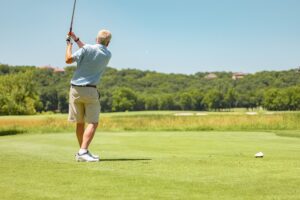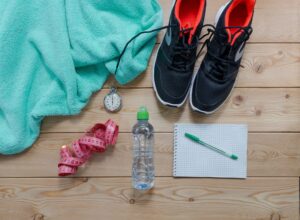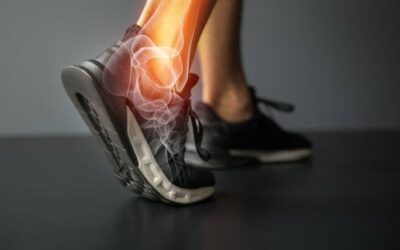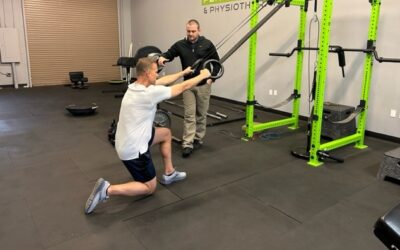“A person MY age should NOT be doing (BLANK).”
“I’m too OLD to do that kind of stuff.”
Why is aging looked at as something that makes you decrepit and on the verge of being six feet under?
When I hear those above quotes from patients, I almost want to ask them if I am going to be invited to their funeral next week.
Just because you are getting old does not mean that you should stop moving!
Besides, you don’t get OLD and then STIFF, you get STIFF THEN OLD.
I don’t understand how much money people continue to spend on Botox, fillers, pills, cryotherapy, topical creams, etc. to try and avoid looking older.
As if there isn’t something already out there that helps slow the aging process, can be totally free, gives you more energy, and a whole host of other benefits.
Did you catch the hint?
The answer is exercise. Exercise is the answer.
I swear if I had a dollar for every time I heard the excuse that age is stopping a patient from doing something, I could quite possibly be a millionaire! Before you subtract some zeros…
My question is always is age really to blame for the reason you are not living the life you want?
There is no denying that as we age we have a change in our body composition. Meaning, that maybe the discs in our backs do become less fluid. Our hormones do change. Our eyesight might get a little worse. We bruise a little easier.
Are those the real reasons you are not living the life you want?
I will say no I don’t believe so. You can look at competitive runners in their later stages of life and notice they have joint degeneration. They have some hormonal changes. Their eyesight isn’t what it used to be.
Yet, they continue to run.
The lack of physical activity plays a large role in the loss of activity as we age. In other words, we become less active as we age. Now this isn’t because we’re getting old. It’s because we become more and more sedentary or physically inactive.
Facts:
- 27.5% of adults 50 years and older reported NO physical activity outside of work
- Inactivity significantly increases with age.
- 25.4% of adults aged 50-64 are inactive
- That’s approximately 31 million inactive people!
- 26.9% of adults aged 65-74
- 35.3% of adults 75 years and old
- 25.4% of adults aged 50-64 are inactive

As shown above, physical inactivity is more to blame than age for losing the ability to perform tasks. In other words, being inactive leads to loss of the things we love (ex. golf, swimming, hiking) and even worse, the loss of independence.
From a healthcare perspective, physical inactivity leads to more doctor visits, hospitalizations, and increased medication use.
I treat patients of all different ages and physical activity levels and I can honestly say that the younger patients are not always healthier.
Some of my patients in their 60s can still run and jump, while some of my patients in their 40s cannot do that. I have patients in their 70s and 80s who golf multiple days a week.
Do you think they have the same joint health as those in their teenage years? Is their hormonal makeup the same as the construction worker in his 40s?
As a healthcare professional I have found that patients who remain physically active throughout their life age much more gracefully and maintain their independence into their 70s and 80s more than those who are sedentary.

It’s not a magic pill or big secret.
Physical activity is good for your health in so many ways.
Here’s a few more benefits of physical activity if you still need a bit more convincing or motivation:
- Increased/maintained independence and cognitive function
- Increased energy
- Improved bone health
- Improved sleep
- Decreased stress and anxiety
- Controlled BP
- Decreased fall risk and improved balance
- Manage and prevent disease like heart disease, stroke, osteoporosis, arthritis, type 2 diabetes, and cancer
Current recommendations for healthy adults from 18-65 years old, include a minimum of 30 minutes of moderate aerobic activity 5 days a week OR a minimum of 20 minutes of vigorous aerobic activity 3 days a week. Additionally, every adult should participate in activities that either maintain or improve strength and endurance at least 2 days a week.
Inactivity is higher in people with chronic diseases. People may believe that these individuals are inactive due to their disease. However, Physical Activity Guidelines for Americans states that older adults and adults with chronic diseases or disabilities should try to engage more in physical activity within their capabilities.
Age doesn’t have to be a death sentence.
We do have an impact and choice on how we age.
Discipline, drive, and the desire to stay active and keep our independence is how we truly age gracefully.
Diet, exercise, sleep, and stress management all play a role in how we age. We know this. We know that stress is the silent killer.
We know that we should go outside and walk for our physical and mental health. We know the benefits of eating vegetables and lean meats.
Just because we know the benefits of importance of something doesn’t mean that we do it. But why do we lack the accountability?
Why not take care of yourself so you can continue to do the things you love?
You can put the things you are doing today into a bucket and think to yourself, “is this helping my future self. Would my future self thank me for the activities I am doing now?”
Movement is good for all of us, especially as we are aging.
If your movement is being hindered by some sort of pain or discomfort, apply for our free consultation to see what can be done to help you keep your independence!




